Wildlife in Your Backyard
Live in harmony with your backyard! Pollinators & Insects – Wildlife
Pollinators & Insects – Wildlife
Birds aren’t the only ones that can use your yard to their benefit.
Anything from Deer to tiny Tree Frogs can inhabit your yard to and use its resources. Here are some of the general wildlife you can see in your yard.
Bumble Bee
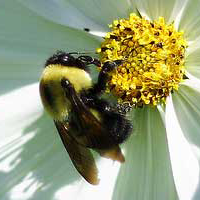
Photo: Rosana Prada
Habitat
The common eastern bumble bee can be found throughout the east coast from Maine to Florida and west through Ohio. Look for the common eastern bumble bee flying through the air in spring and summer near gardens, farms, and backyards. Their nests are located in woodlands and fields.
Feeding Behavior
The common eastern bumble bee is a pollinator of flowers and numerous fruit and vegetable crops, including tomatoes, blueberries, and cucumbers. Bumble bees have fur all over their bodies; these hairs collect and trap pollen which the bees carry from one bloom to another.
For more information visit: https://www.nwf.org/Wildlife/Wildlife-Library/Invertebrates/Common-Eastern-Bumble-Bee.aspx
Daddy Long Leg
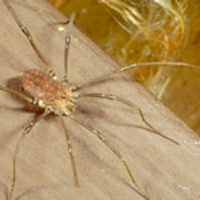
PHOTO: Univ. Kentucky – R. Bessin 2002
Habitat
Daddy-longlegs are generally beneficial. In the fall, they can become a nuisance when they congregate in large clusters on trees and homes, usually around eves and windows. Additionally they can be found in damp crawl spaces, unfinished basements, and garages. Rarely are daddy-longlegs encountered inside finished, living spaces of homes.
Feeding Behavior
They have a very broad diet that includes spiders and insects, including plant pests such as aphids. Daddy-longlegs also scavenge for dead insects and will eat bird droppings.
For more information visit: https://www.clemson.edu/cafls/departments/esps/factsheets/household_structural/daddy_longlegs_hs47.html
Honey Bee
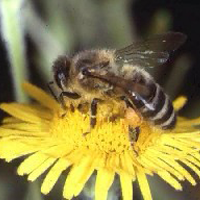
Photo: Everything About Honey Bee
Habitat
The honey bee is a social insect that can survive only as a member of a community, or colony. The colony inhabits an enclosed cavity, its nest. Domesticated colonies are kept in artificial containers, usually wooden boxes, known as hives.
Feeding Behavior
As with all bees, pollen is the principal source of protein, fat, minerals, and vitamins, the food elements essential for the growth and development of larvae of all three castes. Adult bees can subsist on honey or sugar, a pure carbohydrate diet.
For more information visit: http://www.everythingabout.net/articles/biology/animals/arthropods/insects/bees/honey_bee/
Lady Bug
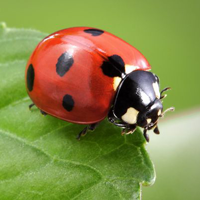
Photo:
Habitat
Most lady beetles found on crops and in gardens are aphid predators. Some species prefer only certain aphid species while others will attack many aphid species on a variety of crops. Some prefer mite or scale species. If aphids are scarce, lady beetle adults and larvae may feed on the eggs of moths and beetles, and mites, thrips, and other small insects, as well as pollen and nectar. They may also be cannibalistic. Because of their ability to survive on other prey when aphids are in short supply, lady beetles are particularly valuable natural enemies.
Feeding Behavior
Lady beetles, both adults and larvae, are known primarily as predators of aphids (plant lice), but they prey also on many other pests such as soft-scale insects, mealybugs, spider mites and eggs of the Colorado Potato Beetle and European Corn Borer. A few feed on plant and pollen mildews. One larva will eat about 400 medium-size aphids during its development to the pupal stage. An adult will eat about 300 medium-size aphids before it lays eggs. About three to ten aphids are eaten for each egg the beetle lays. More than 5,000 aphids may be eaten by a single adult in its lifetime. The lady beetle’s huge appetite and reproductive capacity often allow it to rapidly clean out its prey.
Apart from aphids, ladybugs also require a source of pollen for food and are attracted to specific types of plants. The most popular ones have umbrella shaped flowers such as fennel, dill, cilantro, caraway, angelica, tansy, wild carrot & yarrow. Other plants that also attract ladybugs include cosmos (especially the white ones), coreopsis, and scented geraniums, dandelions.
For more information visit: https://www.gardeninsects.com/ladybugs.asp
Monarch Butterfly
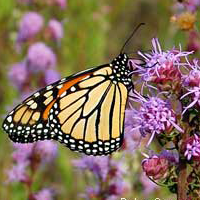
Photo: Peter Gorman
Habitat
Monarch butterflies utilize different habitat in the warm months versus the cold months. In the spring, summer and early fall, they can be found wherever there are milkweeds. Monarchs lay their eggs on milkweeds, and they’re always searching for them in fields, meadows, and parks. Many people plant milkweeds in their gardens.
Feeding Behavior
Monarchs, like all butterflies, change their diet as they develop. During the caterpillar stage, they live exclusively on milkweed plants. Milkweeds are wildflowers in the genus Asclepias. Milkweeds contain glycoside toxins that are harmless to the monarch but poisonous to its predators. Monarch caterpillars feed on all the different parts of milkweed plants and store up the toxins in their body. The toxins remain in their system even after metamorphosis, thereby making adult monarchs poisonous as well.
For more information visit: https://www.nwf.org/Wildlife/Wildlife-Library/Invertebrates/Monarch-Butterfly.aspx
Praying Mantis
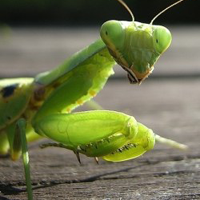
Photo: OpenCage licensed under Creative Commons.
Habitat
Typically green or brown and well camouflaged on the plants among which they live, mantis lie in ambush or patiently stalk their quarry. They use their front legs to snare their prey with reflexes so quick that they are difficult to see with the naked eye. Their legs are further equipped with spikes for snaring prey and pinning it in place.
Feeding Behavior
The praying mantis, a master at camouflage, hunts throughout the day. Driven by hunger from the time of its hatching, it may eat its brothers and sisters if it can find no other food. Even more ravenous by the time it reaches adulthood, it may either ambush or stalk its prey. It strikes so swiftly that you can scarcely see the movement. It uses the spines on its front legs to impale and clutch its prey, immediately beginning to chew into the throat. Given the opportunity, it may hold one victim with one front leg and snatch another with the other front leg, feeding gluttonously on them both. While the praying mantis prefers cockroaches and flies, it may attack any number of other insects as well as spiders, salamanders, frogs, mice and hummingbirds.
Swallowtail Butterfly
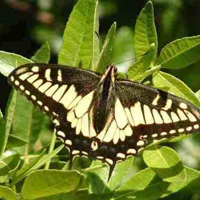
Photo:
Habitat
The black swallowtail is found in open areas including fields, parks, and meadows.
Feeding Behavior
The black swallowtail caterpillar feeds on many different plants in the Apiaceae, or carrot family, including Queen Anne’s lace, celery, parsley, carrots, dill, and parsnip. The butterfly eats nectar from a variety of plants including clover, milkweed, thistles, and phlox.
For more information visit: http://www.nhptv.org/wild/karnerblackswallowtail.asp

